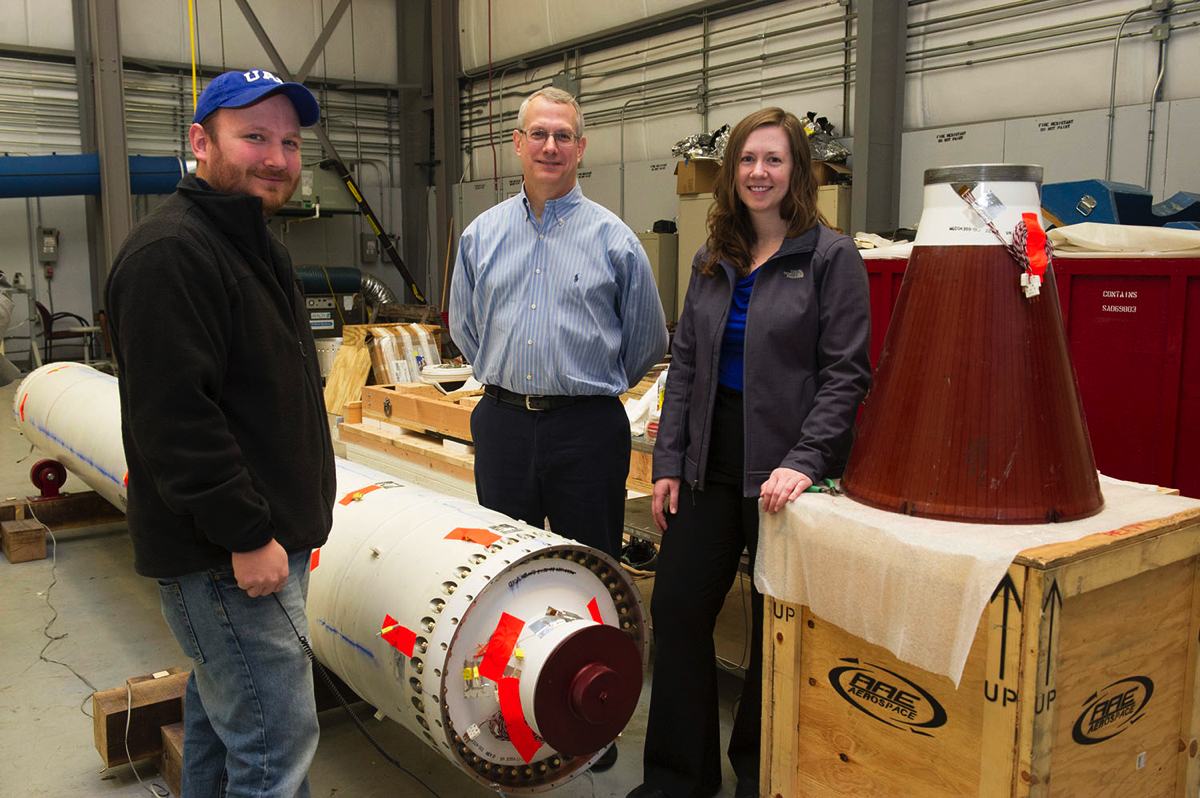NASA engineers are preparing a new Peregrine sounding rocket motor for its first hot-fire test set for February 10 in the east test area at NASA’s Marshall Space Flight Center in Huntsville, Alabama.

The Peregrine sounding rocket motor started as a NASA Engineering and Safety Center (NESC) project and was designed in-house by NASA engineers, but was built in cooperation with commercial suppliers from across America. Peregrine aims to improve performance by 15 percent and reduce flight issues encountered by current sounding rockets used for everything from science observations to technology development. Peregrine is the first motor developed by NASA for the suborbital program under the agency’s Science Mission Directorate.
“We took everything we’ve learned from flying sounding rockets for more than 50 years and put it into this effort,” said Philip Franklin, the Marshall propulsion engineer who manages the Peregrine project. “To hold down costs and enhance reliability, Peregrine is made with established technologies and materials, but to infuse innovation, many young engineers helped design the Peregrine rocket.”
NASA has flown sounding rockets since 1959 to provide up to 30 minutes at high altitudes—to make valuable observations of the sun, stars, and atmosphere or to test out instrumentation or engineering equipment before use on more expensive space missions. Wallops Flight Facility is responsible for designing the vehicle systems and configurations around the Peregrine. It is designing and building payloads and implementing a three-flight test program following the successful static fire.
“The motor is a NASA designed sustainer motor alternative that could be used to support NASA suborbital science missions at the completion of the test flight program,” said Chuck Brodell, Peregrine development manager at NASA’s Wallops Flight Facility in Virginia.”
The rocket motor, which burns solid rocket propellant, is 20 inches in diameter and stands 18.6 feet tall. When the rocket motor is test fired in a horizontal position, it will reach up to 30,000 pounds of thrust.
“We’ll use the test data from this static test firing to evaluate the Peregrine motor’s performance and prepare for its first test flight,” said Lisa Tunstill, a systems engineer who helped design Peregrine.
This data will help prepare the rocket for a flight test from NASA’s Wallops Flight Facility targeted for March 2015.
For more information on NASA sounding rockets, see:
























